#Charles Gonzaga
Text
Huntsville Revived #471
With all the chaos surrounding the divorce, Mary Anne completely forgot that Rick’s birthday was coming.
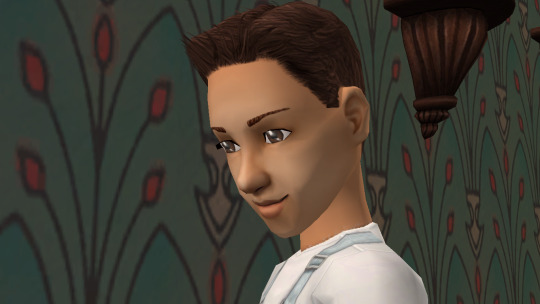
Luckily, Charles had his back and threw a party with all the teenagers he knew.
Turning 13, Rick was ready to look like the teenager he already felt he was.
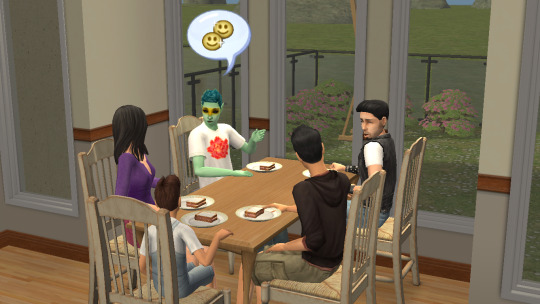
“This is a sweet party,” Apollo commented, “Tons of friends. Good food. Happy birthday!”
“Thanks. And thanks Charles for organizing it.” Rick felt pretty special that not only were there kids his age, like Rae, but the older crowd was out to celebrate too.
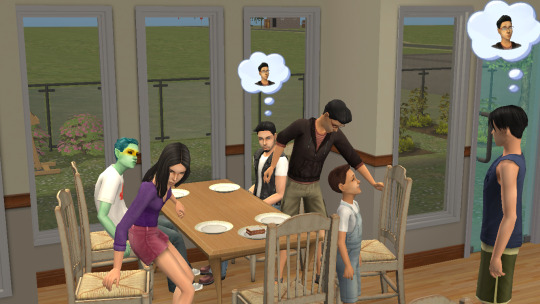
“Hey Charles! Where’s the birthday boy? There you are, Rick. Is it time yet?” Hunter and a few others arrived.
“You’re just in time,” Rick informed him.

“Happy birthday to you! Happy birthday to you! Happy birthday, dear Rick. Happy birthday to you!”
Everyone sang and cheered to with Rick a happy birthday.

He was well and truly a teenager now.
Once the official part of the party was over, the teens started dancing and hanging out.

At one point, however, Nathan decided to get into it with Hunter.
“Hey, you better not cheat on Delilah the way your dad cheated on your mom.”

“What the hell, man. I’m not happy about that either.” Hunter was thoroughly confused. He and Nathan had always been cool.

“I heard about what happened in the Islands. My Dad is so furious at your Dad. You better not take after him.” Nathan didn’t let up.

“Back off, Nathan. Don’t talk about my Mom. You don’t know anything about it.” Hunter was prepared to let his younger cousin have it.

Luckily, Charles and Rick realized the situation was heating up. They managed to separate the two teens.
“Nathan, you have to explain to me your latest chess technique!” Charles announced, pulling him away from Hunter.
“You’re lucky your parents are staying divorced,” Rick told Hunter, “Mine getting back together is too much drama.”
Rick ended up having a terrific birthday party.
#Huntsville Revived#the sims#ts2#Rick Lawson#Charles Gonzaga#Hunter Lawson#Nathan Hunt#Apollo Goldsun#Tom Foxman
13 notes
·
View notes
Text


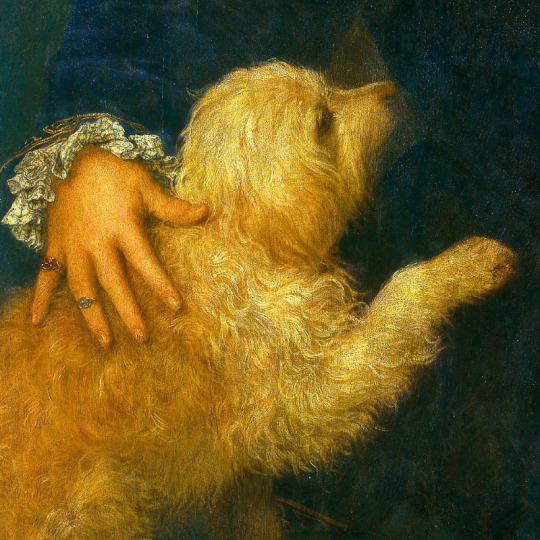



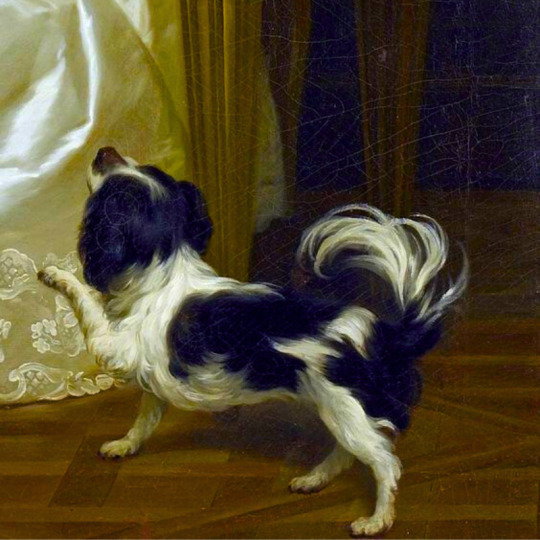
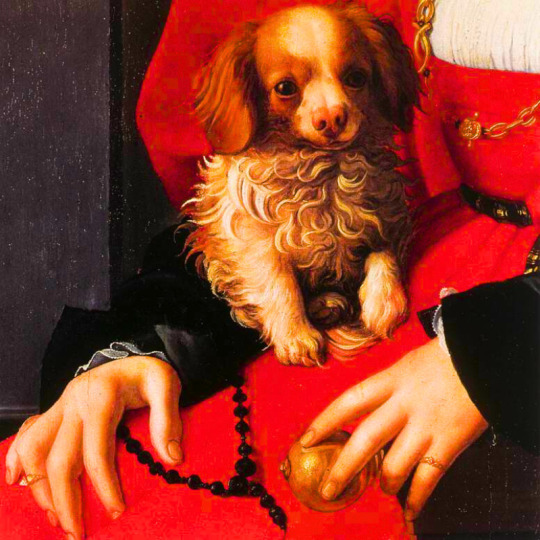
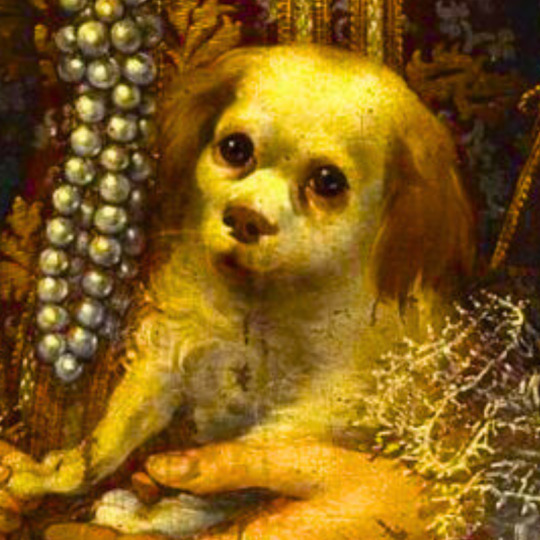


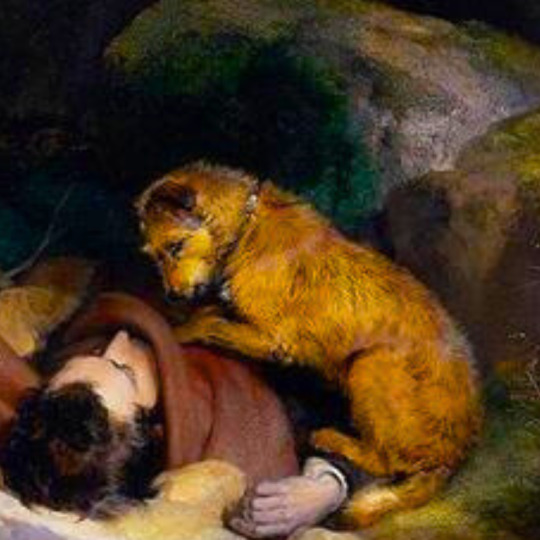





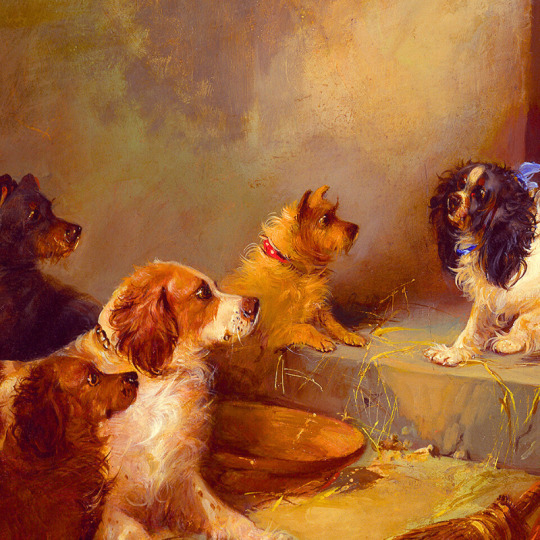
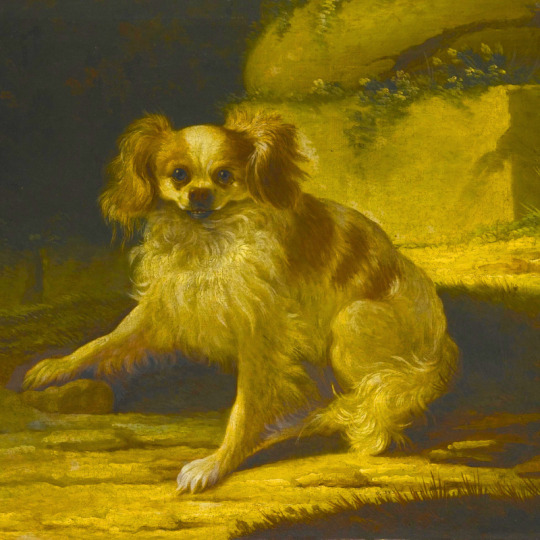


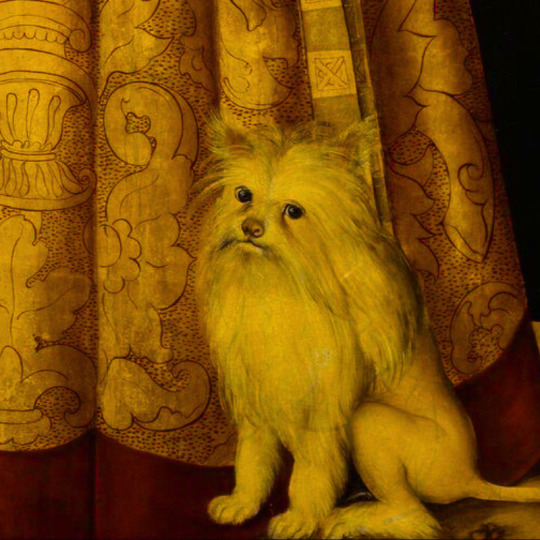
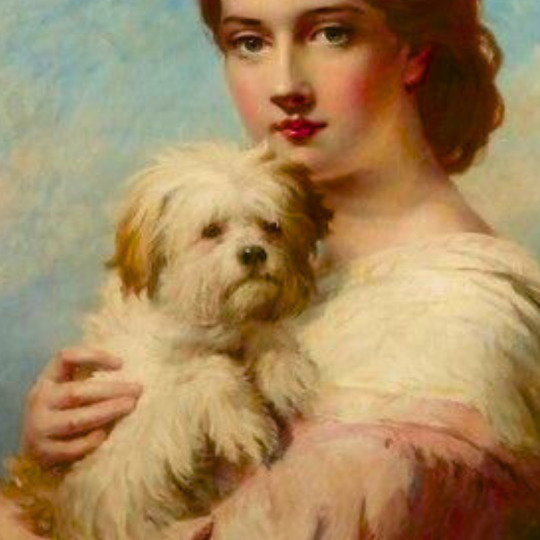
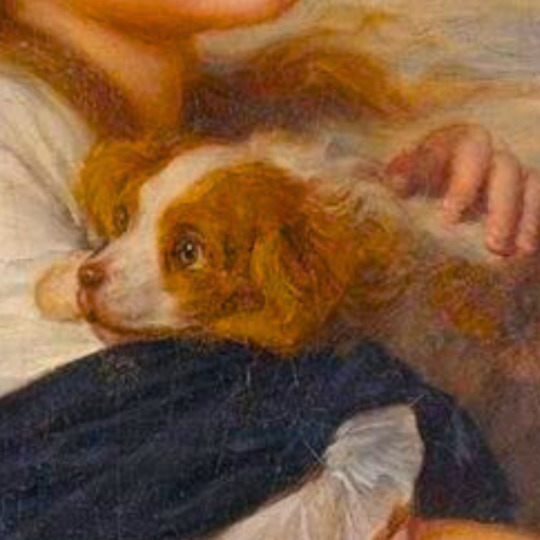

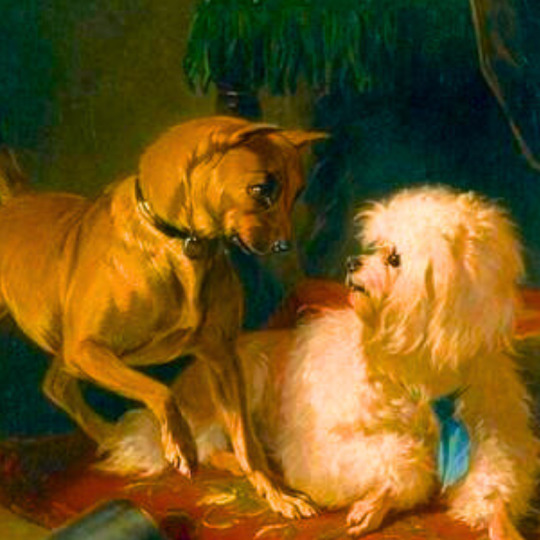




dogs + art
#mars and venus with cupid and a dog by paola veronese#venus of urbino by titian#portrait of federico ii gonzaga by titian#the death of procris by piero di cosimo#arnolfini portrait by jan van eyck#venus and adonis by titian#portrait of the countesse d'egmont pignatelli in spanish costume by alexander roslin#portrait of a lady in red by agnolo bronzino#maselli family portrait by lavinia fontana#children of the marquis de bethune playing with dog by francois hubert drouais#portrait of princess ekaterina dmitrievna golitsyna by louis-michel van loo#attachment by edwin landseer#gelert by charles b. barber#the poor dog the shepherd's grave by edwin landseer#requiescat by briton riviere#marie leszczinska#my lady's pets by arthur wardle#the great debate by george armfield#portrait of a brown and white toy spaniel in a landscape by jacques-charled oudry#darby in his basket kennel by anthony frederick sandys#portrait of john 3rd baron monson of burton by pompeo girolamo batoni#portrait of dutchess katharina von mecklenburg by lucas cranach the elder#young lady and her dog by james john hill#young girl with a spaniel by jean-baptise greuze#the masters chair by john henry dolph#interior with two dogs by conradijn cunaeus#no walk today by wright baker#painter's studio by otto erelman#study of greyhounds by alexandre-francois desportes#sitting pretty by horatio henry couldrey
189 notes
·
View notes
Text


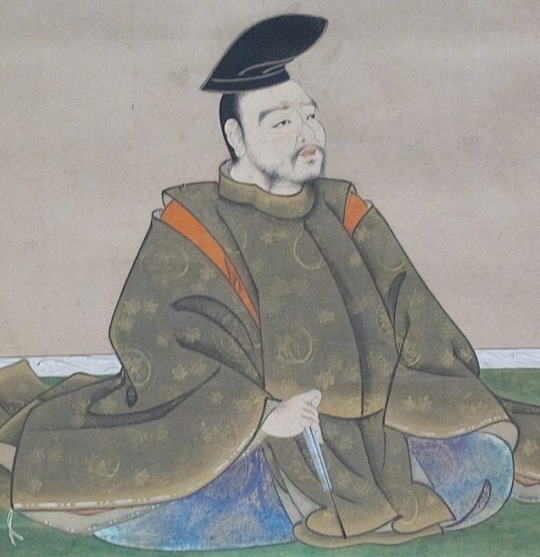
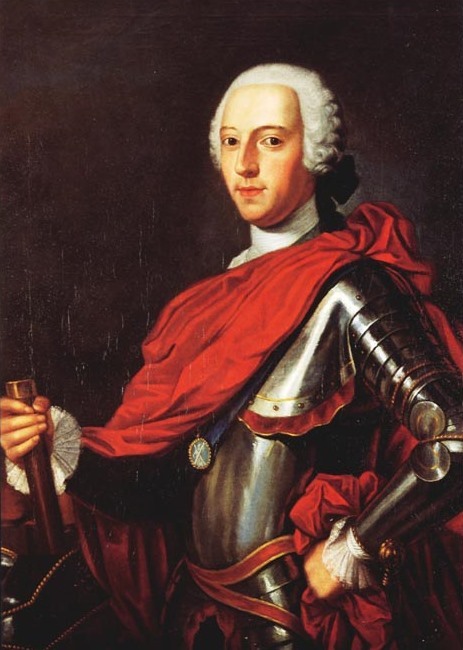
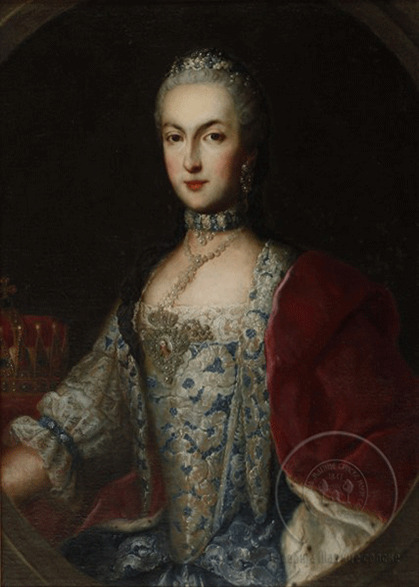
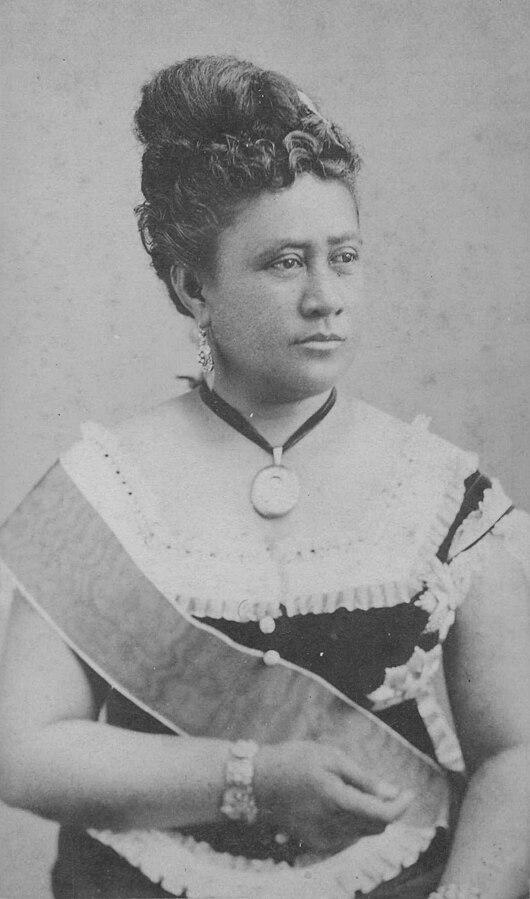

Royal Birthdays for today, December 31st:
Eleonora Gonzaga, Duchess of Urbino, 1493
Beatrice of Portugal, Duchess of Savoy, 1504
Go-Yozei, Emperor of Japan, 1572
Charles Edward Stuart, The Young Pretender, 1720
Isabella of Parma, wife of Joseph II of Austria, 1741
Kapiʻolani, Queen of the Hawaiian Islands, 1834
Princess Victoria Adelaide of Schleswig-Holstein, Duchess of Saxe-Coburg and Gotha, 1885
#isabella of parma#eleonora gonzaga#beatrice of portugal#emperor Go-Yozei#charles edward stuart#Kapiʻolani#queen Kapiʻolani#Victoria Adelaide of Schleswig-Holstein#royal birthdays#long live the queue
21 notes
·
View notes
Photo

Saint Aloysius Gonzaga
1568 - 1591
Feast Day: June 21
Patronage: young students, Christian youth, Jesuit novices, the blind, AIDS
Aloysius Gonzaga was an Italian aristocrat who became a member of the Society of Jesus. He came under the spiritual guidance of St. Charles Borromeo, and from him received First Holy Communion. While still a student at the Roman College, he died as a result of caring for the victims of an epidemic.
Prints, plaques & holy cards available for purchase here: (website)
74 notes
·
View notes
Text

Parnassus (also known as Mars and Venus, 1497 - Andrea Mantegna (1431–1506)
The Parnassus was the first picture painted by Mantegna for Isabella d'Este's studiolo (cabinet) in the Ducal Palace of Mantua. The shipping of the paint used by Mantegna for the work is documented in 1497; there is also a letter to Isabella (who was at Ferrara) informing her that once back she would find the work completed.
The theme was suggested by the court poet Paride da Ceresara. After Mantegna's death in 1506, the work was partially repainted to update it to the oil technique which had become predominant. The intervention was due perhaps to Lorenzo Leonbruno, and regarded the heads of the Muses, of Apollo, Venus and the landscape.
Together with the other paintings in the studiolo, it was given to Cardinal Richelieu by Duke Charles I of Mantua in 1627, entering the royal collections with Louis XIV of France. Later it became part of the Louvre Museum.
The traditional interpretation of the work is based on a late 15th-century poem by Battista Fiera, which identified it as a representation of Mount Parnassus, culminating in the allegory of Isabella as Venus and Francesco II Gonzaga as Mars.
The two gods are shown on a natural arch of rocks in front a symbolic bed; in the background the vegetation has many fruits in the right part (the male one) and only one in the left (female) part, symbolizing the fecundation. The posture of Venus derives from the ancient sculpture. They are accompanied by Anteros (the heavenly love), opposed to the carnal one. The latter is still holding the arch, and has a blowpipe which aims at the genitals of Vulcan, Venus' husband, portrayed in his workshop in a grotto. Behind him is the grape, perhaps a symbol of the drunk's intemperance.

Detail of Vulcan.
In a clearing under the arch is Apollo playing a lyre. Nine Muses are dancing, in an allegory of universal harmony. The touch of Pegasus's hoof (right) can generate the spring which fed the falls of Mount Helicon, which can be seen in the background. The Muses danced traditionally in wood of this mount, and thus the traditional naming of Mount Parnassus is wrong.

Detail of Pegasus and Mercury.
Near Pegasus is Mercury, with his traditional winged hat, caduceus (the winged staff with entwined snakes), and messenger shoes. He is present to protect the two adulterers.
#parnassus#mars and venus#anteros#mercury#venus#vulcan#roman mythology#andrea mantegna#italian artist#italian renaissance#15th century art#tempera and gold on canvas#mythological art#mythological painting#tempera painting#pegasus#greek mythology#musée du louvre#allegorical art#allegorical painting#apollo#the nine muses#mount helicon#art details
6 notes
·
View notes
Text






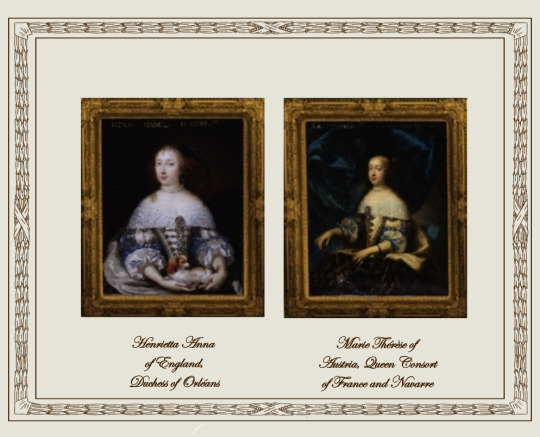
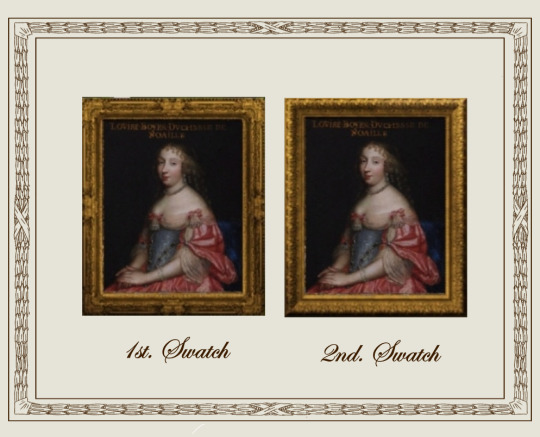
Louis XIV's Gallery of Beauties
A retexture by La Comtesse Zouboff — Original Mesh by @thejim07
This set of 20 portraits was comissioned by the king himself in the 1650s to Charles and Henri Beaubrun (except for a portrait of Henrietta Anna of England, Comissioned to Nicolas Mignard) The portraits comprises the queen, royal princesses and ladies of the court. They hanged at the king's appartments at Versailles. In the 1670s the paintings were progressively relegated to the king's minor residences, but in 1837, Louis-Philippe, King of the French turned Versailles into a museum and rejoined the paintings, in the Louis XIV Rooms, where they remain.
The set includes 20 portraits, with the original frame swatches, fully recolorable. The portraits are of:
Anne Genèvieve de Bourbon, Duchess d'Estouteville and Longueville
Françoise-Athénaïs de Rochechouart (later, Marquise de Montespan)
Anna Martonozzi, Princess of Conti
Anne Louise Boyer, Duchess of Noailles
Anne Marie Gonzaga, Countess Palatine
Anne de Rohan-Chabot, Princess de Soubise
Catherine Henriette d'Harcourt, Duchess d'Arpajon
Catherine de Neuville, Countess d'Armagnac
Charlotte Catherine de Gramont, Proncess of Monaco
Charlotte Isabelle Angélique de Montmorency-Bouteville, Duchess of Mecklenburg-Schwerin
Elizabeth of Orléans, Duchess of Guise and Joÿeuse
Françoise Madeleine d'Orléans (née de Valois) Duchess of Savoy
Françoise Mignot, Mareschalle of l'Hospital
Françoise de Neufville, Duchess of Chaulnes
Gabrielle-Louise de Saint-Simon, Duchess of Brissac
Henrietta Anna of England, Duchess of Orléans
Madeleine-Charlotte d'Albert-d'Ailly, Duchess of Foix
Marguerite Louise d'Orléans, Grand Duchess of Tuscany
Marguerite-Louise-Suzanne de Béthune-Sully, Countess of Gyche
Marie Thérèse of Austria, Queen Consort of France and Navarre
Found under Decor > Paintings for 940 §
Retextured from the "portrait of Anne Marie Louise d'Orléans", found here
Table, torcheres and floor by @thejim07
Rest of the decor by @joojconverts

Drive
(Sims3pack | package)
(Useful tags)
@joojconverts @ts3history @ts3historicalccfinds @deniisu-sims @katsujiiccfinds
-------------------------------------------------------
#the sims 3#ts3#sims 3 cc#portrait#s3cc#sims 3#sims 3 download#sims 3 cc finds#palace of versailles#sims 3 decor#wall decor
41 notes
·
View notes
Text
THIS DAY IN GAY HISTORY
based on: The White Crane Institute's 'Gay Wisdom', Gay Birthdays, Gay For Today, Famous GLBT, glbt-Gay Encylopedia, Today in Gay History, Wikipedia, and more …


1660 – Cardinal Francesco Maria de' Medici, was born in Florence, the son of Grand duke Ferdinando II of Tuscany and Vittoria Della Rovere (d.1711).
In 1683 he was appointed to governor of Siena, a position he maintained until his death. He was the grand prior of the Sovereign Order of Malta in Pisa; Abbot commendatario of S. Galgano, Siena; Abbot commendatario of S. Stefano, Carrara, 1675.
According to a family tradition was promoted to the cardinalate at a young age in 1686. He remained in Florence, in his villa of Lappeggi, devoting himself to a life not really religious, made of amusements and love affairs with men.
He resigned the cardinalate on June 19, 1709 and was named prince of Siena. He then was forced to marry in 1709 Eleonore Luisa Gonzaga, duchess of Guastalla, daughter of Vincenzo Gonzaga, in an attempt to save the dynasty, but they did not have children.


1746 – Jacques Charles (d.1823) was a French mathematician and inventor, best known for his work with the hydrogen balloon.
Jacques was the only child of his parents. Jacques' education consisted of basic arithmetic , and no science at all. Other than this almost nothing is known about his earlier years.
Late in life Jacques married a creole woman, Julie Françoise Bouchaud des Hérettes, who was 37 years younger than himself. Many historians believe that his marriage was a cover up for his homosexual relationship with the poet, Alphonse de Lamartine.
In 1785 Charles became a professor at the French Académie des Sciences without having any formal science education himself.
Without Charles's contributions, the Hindenburg would not have even existed, so that accident would not have occurred, and we wouldn't have the one-way valve, or at least until someone else came up for the idea after Charles did.
Most notably Jacques Charles is known for the Hydrogen balloon which he built with the Robert Brothers. Jacques originally got the idea for using hydrogen gas as a lifting agent after intensive study of Boyle's Law. Previous to the use of hydrogen gas, hot air was used to make balloons fly.
Charles also is known for the invention of the gas valve, which he used on his hydrogen balloons, the hydrometer, and the reflection goniometer. He improved the heilostat and the arometer. Charles also confirmed Benjamin Franklin's electrical experiments. Charles is also responsible for Charles's Law, but did not publish it. It was published by Joseph Gay-Lussac in 1802, and Joseph named it in Charles's honor, crediting an unpublished work by Jacques Charles.
Jacques Charles outlived his young wife, and later died himself April 7, 1823 in Paris.


1915 – Roland Barthes (d.1980), a French semanticist, symbolist, and philosopher, like André Gide and Marcel Proust, two of his favorite writers, was somewhat of an outsider. He was Protestant. (France is predominantly Catholic.) He was left-handed. (France is, of course, predominantly right-handed.) He was déclassé. (Barthes's father, a naval officer, died in the First World War, and his mother had to work as a bookbinder.) He was consumptive. (Barthes spent several years in sanatoria.) And he was expatriate. (Barthes spent the 1950s in the Middle East and Eastern Europe, working for cultural services.) He was also, like Proust, (if not like Gide, who saw himself as a pederast), a homosexual.
Barthes's critical writings are best understood in relation to this sexual marginality. Because Barthes sees homosexuality, and for that matter any transgressive and eccentric "perversion," as unclassifiable, he rejects the classification "inversion" as inaccurate—a notion that will come as a surprise to gays and lesbians who see themselves as "inverts."
Oddly enough, Barthes does not reject every gay male stereotype. Barthes rejects sexual inversion, but embraces "tricking" and "cruising," activities that he claims represent true sexual liberation. (Not that they did so for Barthes himself; his autobiographical texts suggest he had an unhappy love life.) Cruising, he writes, is "anti-natural, anti-repetition." It may be that Barthes is simply "protecting" his sexuality here (something he feels all writers do), or at least the macho ("phallocentric") part of his sexuality because whereas sexual inversion feminizes gay men, cruising for tricks is a rather manly (and purportedly desirable) thing to do.
Barthes sees tricking and cruising as desirable in another sense as well. The trick, he writes, "is homogenous to the amorous progression; it is a virtual love, deliberately stopped short on each side, by contract." Likewise, men cruise with "the invincible idea that one will find someone with whom to be in love." Some gays (who cruise for sex, not love) will find these descriptions unrealistic. Barthes, however, feels that sentimentality, in an age such as ours in which love doesn't make too much sense, is essentially—and even nonparadoxically—insignificant.
According to Barthes, "it is Western discourse as such" —discourse that marginalizes and stereotypes gays and lesbians—" that we must now try to break apart."


1946 – James F. Amos is a retired United States Marine Corps four-star general who served as the 35th Commandant of the Marine Corps. As a Naval Aviator, Amos commanded the 3rd Marine Aircraft Wing during the Iraq War in 2003 and 2004. He served as the 31st Assistant Commandant of the Marine Corps. He is the first Marine Corps aviator to serve as commandant.
As Commandant, Amos opposed the repeal of the "don't ask, don't tell" policy regarding homosexuals openly serving in the U.S. military. After President Obama signed the legislation setting the conditions for repeal, Amos led the Department of Defense in carrying out the will of the nation's civilian leadership. In late November 2011, Amos stated that his opposition to gays openly serving in the military has proven unfounded and said that Marines have embraced the change, describing the repeal as a "non-event."
1947 – A New York appellate court overturns the sodomy conviction of a "man of education and culture" accused by a mentally retarded vagrant, thus showing class bias.


1958 – Eric Marcus, born in New York City, is an American non-fiction writer. His works are primarily of LGBT interest, including Breaking the Surface, the autobiography of gay Olympic diving champion Greg Louganis, which became a #1 New York Times Bestseller and Making History: The Struggle for Gay and Lesbian Equal Rights, 1945-1990, which won the Stonewall Book Award. Other topics he's addressed in his writing include suicide and pessimistic humor.
Marcus received his B.A. from Vassar College in 1980 where he majored in Urban Studies. He earned his Master's degree from Columbia University Graduate School of Journalism in 1984 and a Master's degree in real estate development in 2003, also from Columbia University. He was an associate producer for Good Morning America and CBS Morning News.
Eric Marcus is the American Foundation for Suicide Prevention’s Senior Director for Loss and Bereavement Programs. He wrote his best-seller Why Suicide? in order to come to terms with his own father's suicide when Eric was twelve years old.
Other popular works include What If Someone I Know Is Gay? Answers to Questions about What It Means to be Gay and Lesbian, and The Male Couple's Guide: Finding a Man, Making a Home, Building a Life.


1970 – Craig Parker, born in Suva, Fiji, is an actor from New Zealand, known for his roles as Haldir in the films The Fellowship of the Ring (2001) and The Two Towers (2002), Darken Rahl in the television series Legend of the Seeker, Stéphane Narcisse in the CW television series Reign, and Gaius Claudius Glaber in the television series Spartacus.He also serves as narrator for New Zealand documentaries. Parker starred in the TVNZ soap Shortland Street, as Guy Warner, a character that has made several return appearances, most recently involving a story where Guy ran off with his brother's wife, Toni, only to return months later as a drug addled loser who attempted to use his daughter to score drugs for him. It ultimately led to the death storyline of Toni Warner. He is the reigning champion of New Zealand's Celebrity Joker Poker.
Parker first publicly discussed being gay in an interview with New Zealand’s Sunday Herald back in 2008. Regarding his sexuality, the very private Parker told the reporter that as a gay man, he doesn’t care what people say about his sexuality and that:
It’s jut not an issue for me. I just don’t get why an actor would want to reveal their secrets, hopes and fears to a magazine or newspaper. I know what the magazine gets out of it, but not the person. If you are doing publicity to increase your self-confidence then you are really in trouble. It’s important to keep some privacy. Your friends and family are the people you reveal yourself to. They are the ones who should have real access to you.


1980 – James Ryan Clabots , best known as Jimmy Clabots, is an American physical therapist, actor, and screenwriter. In 2009 he became a male escort, and retired in 2012. Since 2014 he’s been working as a writer and physical therapist in Los Angeles.
In 2000 he became a model. In 2008 Clabots started his career as an actor in the comedy film Another Gay Sequel: Gays Gone Wild!. In 2011 he starred in Showtime's Gigolos, showing male escorts in Las Vegas, but left the show in 2012 when he retired from escorting.

Clabots is of Cuban and Spanish descent.

1964 – The first depiction of a same-sex relationship is found in an Egyptian tomb. Nyankh-khnum and Khnum-hotep are discovered buried together side by side. The wall art shows the two men kissing. They were ancient Egyptian royal servants. They shared the title of Overseer of the Manicurists in the Palace of King Nyuserre Ini, sixth pharaoh of the Fifth Dynasty, reigning during the second half of the 25th century BC. They were buried together at Saqqara and are listed as "royal confidants" in their joint tomb.

The Embrace of Niankhkhnum and Khnumhotep


7 notes
·
View notes
Text
Talk to me if you are interested in:
Napoleon and Napoleon II
Rousseau
Charles II of England and his sons
Louis XIII/XVI/XV/XVI (yesss ALL of them)
Philippe I Duc d'Orleans
Marquis de Sade
Peter the Great
Louis Ferdinand, Dauphin
Lord Byron
Literally any of the castrati though my fav are Farinelli, Caffarelli, Matteuccio, Pacchierotti, Tenducci and Guadagni
Casanova (his memoirs are awesome)
John Wilmot (the naughtiest Earl of Rochester)
The Rhine princes (Charles Louis, Rupert, Edward, Maurice)
Louis Auguste (duke of Maine)
Henry Benedict Stuart
Henry Stuart, Duke of Gloucester
Louis Jean Marie de Bourbon, duc de Penthièvre
Charles Townshend, 2nd Viscount Townshend
François Louis, Prince of Conti
Louis Henri of Bourbon
Philippe, Duke of Vendôme
Louis, Duke of Orléans
Philippe, Chevalier de Lorraine
Carlo II Gonzaga Nevers
And thus concludes my subject-to-alteration list of dead men I'd like to discuss. Have a nice day/night! 🌈
#napoleon#rousseau#marquis de sade#louis xvi#louis xv#junot#louis xiv#philippe i duc d'orleans#louis xiii#christian vii#lord byron#peter the great#napoleon ii#Farinelli#Castrati#caffarelli#Pacchierotti#Guadagni#tenducci#casanova#giacomo casanova#charles ii of england#charles ii#matteuccio#john wilmot
15 notes
·
View notes
Text
Ages of Medici Women at First Marriage
I have only included women whose birth dates and dates of marriage are known within at least 1-2 years, therefore, this is not a comprehensive list.
This list is composed of Medici women from 1386 to 1691 CE; 38 women in total.
Piccarda Bueria, wife of Giovanni di Bicci de’ Medici: age 18 when she married Giovanni in 1386 CE
Contessina de’ Bardi, wife of Cosimo de’ Medici: age 25 when she married Cosimo in 1415 CE
Lucrezia Tornabuoni, wife of Piero di Cosimo de’ Medici: age 17 when she married Piero in 1444 CE
Bianca de’ Medici, daughter of Piero di Cosimo de’ Medici: age 14 when she married Guglielmo de’ Pazzi in 1459 CE
Lucrezia de’ Medici, daughter of Piero di Cosimo de’ Medici: age 13 when she married Bernardo Rucellai in 1461 CE
Clarice Orsini, wife of Lorenzo de’ Medici: age 16 when she married Lorenzo in 1469 CE
Caterina Sforza, wife of Giovanni de' Medici il Popolano: age 10 when she married Girolamo Riario in 1473 CE
Semiramide Appiano, wife of Lorenzo di Pierfrancesco de' Medici: age 18 when she married Lorenzo in 1482 C
Lucrezia de’ Medici, daughter of Lorenzo de’ Medici: age 18 when she married Jacopo Salviati in 1488 CE
Alfonsina Orsini, wife of Piero di Lorenzo de’ Medici: age 16 when she married Piero in 1488 CE
Maddalena de’ Medici, daughter of Lorenzo de’ Medici: age 15 when she married Franceschetto Cybo in 1488 CE
Contessina de’ Medici, daughter of Lorenzo de’ Medici: age 16 when she married Piero Ridolfi in 1494 CE
Clarice de’ Medici, daughter of Piero di Lorenzo de’ Medici: age 19 when she married Filippo Strozzi the Younger in 1508 CE
Filberta of Savoy, wife of Giuliano de’ Medici: age 17 when she married Giuliano in 1515 CE
Madeleine de La Tour d’Auvergne, wife of Lorenzo II de’ Medici: age 20 when she married Lorenzo in 1518 CE
Catherine de’ Medici, daughter of Lorenzo II de’ Medici: age 14 when she married Henry II of France in 1533 CE
Margaret of Parma, wife of Alessandro de’ Medici: age 13 when she married Alessandro in 1536 CE
Eleanor of Toledo, wife of Cosimo I de’ Medici: age 17 when she married Cosimo in 1539 CE
Giulia de’ Medici, daughter of Alessandro de’ Medici: age 15 when she married Francesco Cantelmo in 1550 CE
Isabella de’ Medici, daughter of Cosimo I de’ Medici: age 16 when she married Paolo Giordano I Orsini in 1558 CE
Lucrezia de’ Medici, daughter of Cosimo I de’ Medici: age 13 when she married Alfonso II d’Este in 1558 CE
Bianca Cappello, wife of Francesco I de’ Medici: age 15 when she married Pietro Bonaventuri in 1563 CE
Joanna of Austria, wife of Francesco I de’ Medici: age 18 when she married Francesco in 1565 CE
Camilla Martelli, wife of Cosimo I de’ Medici: age 25 when she married Cosimo in 1570 CE
Eleanor de’ Medici, daughter of Francesco I de’ Medici: age 17 when she married Vincenzo I Gonzaga in 1584 CE
Virginia de’ Medici, daughter of Cosimo I de’ Medici: age 18 when she married Cesare d’Este in 1586 CE
Christina of Lorraine, wife of Ferdinando I de’ Medici: age 24 when she married Ferdinando in 1589 CE
Marie de’ Medici, daughter of Francesco I de’ Medici: age 25 when she married Henry IV of France in 1600 CE
Maria Maddalena of Austria, wife of Cosimo II de’ Medici: age 19 when she married Cosimo in 1608 CE
Caterina de’ Medici, daughter of Ferdinando I de’ Medici: age 24 when she married Ferdinando Gonzago in 1617 CE
Claudia de’ Medici, daughter of Ferdinando I de’ Medici: age 16 when she married Federico Ubaldo della Rovere in 1620 CE
Margherita de’ Medici, daughter of Cosimo II de’ Medici: age 16 when she married Odoardo Farnese in 1628 CE
Vittoria della Rovere, wife of Ferdinando II de’ Medici: age 12 when she married Ferdinando in 1634 CE
Anna de’ Medici, daughter of Cosimo II de’ Medici: age 30 when she married Ferdinand Charles of Austria in 1646 CE
Marguerite Louise d’Orleans, wife of Cosimo III de’ Medici: age 16 when she married Cosimo in 1661 CE
Violante Beatrice of Bavaria, wife of Ferdinando de’ Medici: age 16 when she married Ferdinando in 1689 CE
Anna Maria Franziska of Saxe-Lauenberg, wife of Gian Gastone de’ Medici: age 18 when she married Philipp Wilhelm of Neuberg in 1690 CE
Anna Maria Luisa de’ Medici, daughter of Cosimo III de’ Medici: age 24 when she married Johann Wilhelm, Elector Palatine in 1691 CE
The average age at first marriage among these women was 17 years old.
6 notes
·
View notes
Photo
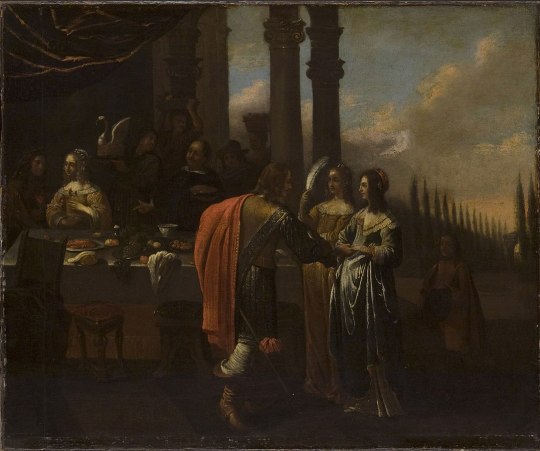
Frans Geffels - Dinner Party on a Terrace - 1660s
oil on canvas, 85.1 x 102.5 cm
Philadelphia Museum of Art, Pennsylvania, USA
Frans Geffels, known in Italy as Francesco Geffels (25 August 1624 – 18 February 1694) was a Flemish painter, printmaker, architect, stage designer and designer of ephemeral structures for solemn and festive occasions. After training in his native Antwerp, he was mainly active in Mantua, where he was prefetto delle fabbriche to the Duke, a role that gave him the direction of the artistic and construction activities undertaken by the Ducal court. He worked also on projects for the local aristocratic class of Mantua. In addition, he completed projects for the Liechtenstein princes and for the imperial court in Vienna.
He was both a canvas and fresco painter. He created portraits, history subjects, military scenes, architectural scenes and genre art, in particular merry companies. Geffels is mainly remembered as the designer of some of the key examples of Baroque architecture in Mantua.
He was born in Antwerp as the son of a laborer in a sugar refinery and a mother who operated a cheese shop. He trained in the guild year 1635/36 with Daniel Middeleer (also called Daniel Middeler and Daniël de Middelaer). Middeleer was a painter, printmaker and publisher. Geffels became a master in the local Guild of St. Luke some time between 18 September 1645 and 18 September 1646. By 1653 he was already abroad for some time.
He was likely recruited to work in Mantua in 1659, by his fellow Flemish painter and architect Daniel van den Dyck. Van den Dyck had been appointed by duke Carlo II Gonzaga, Duke of Mantua as the prefetto delle fabbriche ('Prefect of the Buildings'), a position which combined the duties of official court painter, architect, surveyor of the Ducal construction program and engineer for theatrical stage design.[8] Geffels was working as an architect at the court.
Geffens spent some time in Vienna in 1660-1661 where he worked for the Imperial Court. He returned to Mantua where he became, like van den Dyck before him, prefetto delle fabbriche of the duke of Mantua in 1663. He took the place of his compatriot van den Dyck had died in the previous year. In 1664 Geffens was granted citizenship of Mantua. He was described in official records as an artist who was skilled in creating devices for the theatre.
Geffels remained in the service of the Dukes of Mantua for 30 years. He worked in 1667 in Vienna on commissions for Karl Eusebius, Prince of Liechtenstein. There existed a close relationship between the Viennese court and the dukes of Mantua through marital links. The Empress Dowager Eleonora Gonzaga (1630–1686) was the third wife of Emperor Ferdinand III and the sister of Charles II Gonzaga, Duke of Nevers. He also participated on a book containing the libretto by Francesco Sbarra for the opera Il pomo d'oro scored by Antonio Cesti, which was staged twice in July 1668 on the occasion of the marriage of Emperor Leopold I and Margaret Theresa of Spain. The book was illustrated with prints depicting the various sets used during the staging of the opera. The folio de luxe edition of the book holds a print designed and etched by Geffels showing the opera's performance with Emperor Leopold I and his bride in attendance. The theatre in which the opera was staged had been purpose-built on the occasion of the couple's wedding after a design by Ludovico Ottavio Burnacini. The theatre was destroyed during the Turkish siege of Vienna in 1683 and Geffens' print now serves as the sole evidence of the interior layout of the theatre. In the print, the imperial family is shown sitting at the front. In the foreground there is a row of soldiers. Geffels had himself worked on the illusionist ceiling paintings for the court theatre, which are also shown in the print.
Even after his return to Mantua later in 1668, Geffels maintained contact with the Viennese court, as evidenced by his collaboration on the three-volume book by Gualdo Priorato with the title Historia di Leopoldo Cesare and also by his paintings depicting the Relief of Vienna in 1683 (Wien Museum Karlsplatz) and the Retaking of Buda in 1686 (Hungarian National Museum).
Geffens' official duties at the Mantua court included the design and execution of ephemeral objects and structures used on the occasion of important court-related events. In January 1666 he collaborated with Andrea Seghizzi on the decorations and objects made for the funeral of Duke Charles II Gonzaga, Duke of Nevers in the Basilica palatina di Santa Barbara in Mantua. When in 1776 Empress Claudia Felicitas of Austria died in Vienna not long after giving birth, her aunt Isabella Clara of Austria, Duchess of Mantua, had a funeral mass performed in the church of the Mothers of St. Ursula of Mantua, where the Duchess had become a Poor Clare nun. Frans Geffels was commissioned to design and construct a funeral monument that was set up in the middle of the church during the mass. It was mounted on four large marble-coloured pedestals, adorned on the top front with imperial eagles in low-relief. A print of the design was included in the book by Antonio Gobio and Geffels entitled Le essequie celebratesi nella chiesa delle MM. RR. Madri di S. Orsola di Mantoua: d'ordine della serenissima signora arciduchessa Isabella Clara d' Austria, duchessa di Mantoua, Monferrato, &c., per la morte dell' imperatrice augustissima Claudia Felice lei nipote published in Mantua in 1676 by Francesco Osanna, printer to the Duke.
As a court painter and architect, Geffels was not prohibited from taking on private commissions. An important private commission was the redesigning of the Sordi Palace for Benedetto Sordi. He created frescoes in the palace and had the sculptor Gian Battista Barberini provide sculptured decoration of the façade and interior of the palace.
He remained in office until his death in Mantua on 18 February 1694. He was buried in the Church of San Martino which he had himself redesigned. He was the last prefetto delle fabbriche of the duke of Mantua as the role was split over multiple persons after his death.
13 notes
·
View notes
Text
SAINT OF THE DAY (June 21)

Aloysius Gonzaga was born on 9 March 1568, the eldest of eight children, at his family's castle in Castiglione delle Stiviere, between Brescia and Mantua in northern Italy, in what was then part of the Duchy of Mantua, into a cadet branch of the illustrious House of Gonzaga.
NOTE: "Aloysius" is the Latin form of his given name in Italian, "Luigi."
Aloysius was the son of Ferrante de Gonzaga (1544–1586), Marquis of Castiglione, and Dona Marta Tana di Santena, daughter of a baron of the Piedmontese Della Rovere family.
His mother was a lady-in-waiting to Isabel, the wife of Philip II of Spain.
As the first-born son, he was in line to inherit his father's title and status of Marquis.
His father was a compulsive gambler. He grew up in a castle and was trained from a very young age to be a soldier and courtier.
As a young boy, he always had a great desire to know and serve God, but his family was not always supportive of this desire.
Despite the opposition of his family, he taught catechism to poor boys.
He encountered many holy people in his lifetime. He received his first Communion from St. Charles Borromeo and studied under St. Robert Bellarmine.
As a teen, he suffered from a kidney disease, which he considered a blessing, as it left him with plenty of time for prayer.
At 18, he signed away his legal claim to his title and his family's lands.
He then entered The Society of Jesus, commonly known as the Jesuits.
He died on 21 June 1591 at the age of 23, having devotedly cared for plague victims in Rome in the outbreak of 1591.
He was beatified by Pope Paul V on 19 October 1605. He was canonized by Pope Benedict XIII on 31 December 1726.
He is the patron saint of youth, AIDS patients, and AIDS caregivers.
5 notes
·
View notes
Text
Huntsville Revived #468
Felix was furious.

“How long?” Felix demanded, “How long have you been having an affair?”
“Felix, don’t be angry. I’ve never seen you like this. You’ve frightened the boys!” Both Charles and Rick had left the room crying.
“I frightened the boys? You flaunted your affair in front of them - of course they are upset!”

“Charles, what’s happened?” Rick was more confused than he was upset.
“I’m not sure,” Charles confessed, “I think mom and Felix are going to get a divorce.”
“What? But why?” Rick couldn’t believe it.
“I think she might be back with your dad.”
Charles was surprised when this revelation made Rick angry. There was a time when all he wanted was his parents to get back together, but now he had grown attached to Felix and didn’t want to go through all the stress again.

“Get out of my house!” Felix bellowed at Garrick. He did not want to yell at his wife, although he definitely was, but Garrick...he would have killed him in that moment if there weren’t so many witnesses.

“I said, OUT!” Felix walked Garrick to the door.
“Garrick, wait,” Mary Anne called, “Don’t go.”
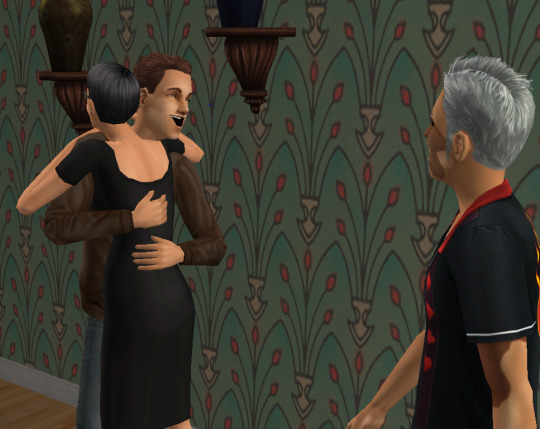
“Did you still want to be with me?” Mary Anne asked Garrick. Felix could only look on, aghast.
“Of course,” was Garrick’s reply.
“Okay,” Mary Anne told him.
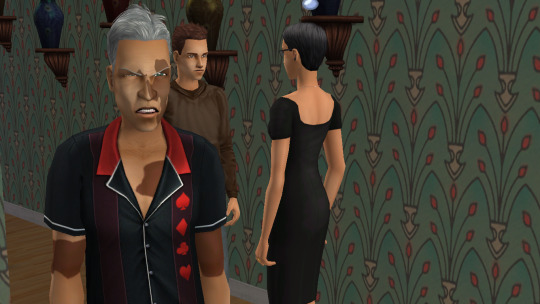
“Can you believe this is happened!? Simblr readers, know that I hate the idea that any harm might come to my wife, but I cannot and I will not allow this to stand without retribution. A reckoning will come and they will both regret this day, as much as I do. Mark my words.”
#Huntsville Revived#the sims 2#ts2#Mary Anne City#Garrick Lawson#Rick Lawson#Charles Gonzaga#Felix Wilkie#What's a criminal mastermind to do?
13 notes
·
View notes
Photo
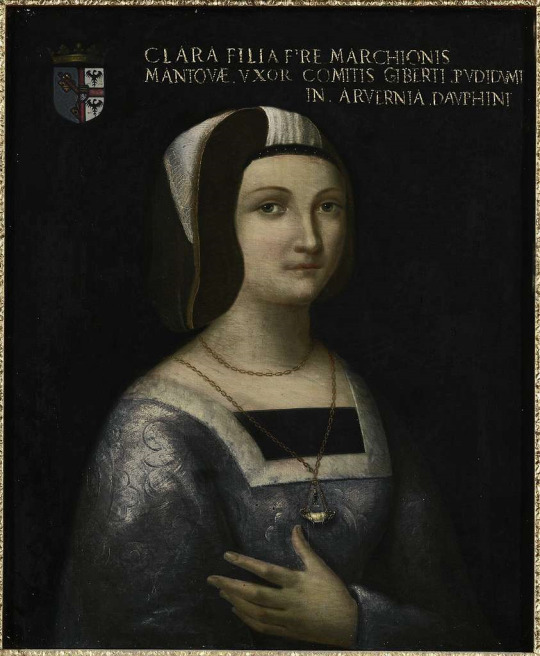
By Anonymous
Portrait of Claire Gonzague (1464-1503)
Princess of the House of Gonzaga. Daughter of Frederick I of Mantua and Margaret of Bavaria. Mother of Louise de Montpensier, Louis II de Montpensier, Charles III de Bourbon, François de Bourbon-Montpensier and Renée de Bourbon-Montpensier.
#art#fine art#classical art#medieval#medieval times#european art#noble#nobility#western civilization#Christendom#europe#european#female portrait
14 notes
·
View notes
Text
Greatest Hits of 1950 | Top Music Hits 1950 | Songs of 1950 [1950s Hits]
Greatest Hits of 1950 | Top Music Hits 1950 | Songs of 1950 [1950s Hits]
00:00 Introduction 00:12 English 05:41 French 06:32 German 07:32 Italian 08:32 Portuguese 09:26 Spanish Greatest Hits of 1950 including: Anton Karas - The Third Man, Billy Eckstine - My Foolish Heart, Bing Crosby - Dear Hearts and Gentle People, Bing Crosby - Rudolph The Red-Nosed Reindeer, Doris Day – Bewitched, Eileen Barton - If I Knew You Were Coming (I'd've Baked a Cake), Ernie Ford & Kay Starr - I'll Never Be Free, Eve Young - Silver Dollar, Frankie Laine - The Cry of the Wild Goose and many more! Subscribe to our channel to see more of our content! Related Searches: Greatest Hits of 1950, Best Jukebox 1950 Playlist, Late 1950 Non Stop , Top 1950 Non Stop, Mix 1950 Compilation, Best 1950 List, Late 1950 UK, Best 1950 Playlist, Best 1950 Non Stop, Best 1950 Video, Greatest 1950 Non Stop, Mix 1950 Playlist, Best Jukebox 1950 List, List of 1950 Mix, Top 1950 USA, Best Songs of 1950, Top Music 1950, Hits of 1950 Related Channels: K-Music, Ultra Lists, Younger days, Music Hits, DJ Crayfish, Redlist, Music Express, Some Random Guy, Francis Pelletier, MarioMex International Mixes, Top Culture, Related Videos: https://www.youtube.com/watch?v=R1zM5WF1NF0 https://www.youtube.com/watch?v=5qmoZ9W8kQg 1. Anton Karas - The Third Man 2. Billy Eckstine - My Foolish Heart 3. Bing Crosby - Dear Hearts and Gentle People 4. Bing Crosby - Rudolph The Red-Nosed Reindeer 5. Doris Day - Bewitched 6. Eileen Barton - If I Knew You Were Coming (I'd've Baked a Cake) 7. Ernie Ford & Kay Starr - I'll Never Be Free 8. Eve Young - Silver Dollar 9. Frankie Laine - The Cry of the Wild Goose 10. Gary Crosby & Bing Crosby - Play A Simple Melody 11. Gary Crosby & Bing Crosby - Sam's Song 12. Gordon Jenkins & His Orchestra - Bewitched 13. Gordon Jenkins & His Orchestra - My Foolish Heart 14. Guy Lombardo - The Third Man 15. Hardrock Gunter - Birmingham Bounce 16. Kay Starr - Bonaparte's Retreat 17. Nat King Cole - Mona Lisa 18. Patti Page - All My Love 19. Patti Page - Tennessee Waltz 20. Perry Como - Hoop-Dee-Doo 21. Phil Harris - The Thing 22. Piano Red - Rockin' With Red 23. Red Foley - Chattanooga Shoe Shine Boy 24. Sammy Kaye - Harbor Lights 25. Sammy Kaye & Don Cornell - It Isn't Fair 26. Steve Conway - My Foolish Heart 27. Teresa Brewer - Music Music Music 28. The Ames Brothers - Can Anyone Explain (No, No, No!) 29. The Ames Brothers - Rag Mop 30. The Ames Brothers - Sentimental Me 31. The Andrews Sisters - I can dream, can't I? 32. The Andrews Sisters - I wanna be loved 33. The Cap-Tans - I'm So Crazy For Love 34. The Weavers and Gordon Jenkins - Goodnight, Irene 35. The Weavers and Gordon Jenkins - Tzena Tzena Tzena 36. Tony Martin - There's No Tomorrow 37. Wynonie Harris - Rock Mr. Blues 38. André Claveau - Cerisier rose et pommier blanc 39. Charles Trenet - Douce France 40. Edith Piaf - Hymne à l'amour 41. Éliane Embrun - Mam'zelle Dimanche 42. Félix Leclerc - Le p'tit bonheur 43. Pierre Malar - Je t'aimerai 44. Anneliese Rothenberger & Detlev Lais - La Le Lu 45. Hans Albers - Nimm mich mit, Kapitän, auf die Reise 46. Rene Carol - Buona Notte, Angelo Mio 47. Rita Paul - Das ist nichts für kleine Mädchen 48. Rudi Schuricke - Florentinische Nächte 49. Vico Torriani - Santa Lucia 50. Carla Boni - Il mago Baku 51. Giorgio Consolini - Forse domani 52. Nilla Pizzi - Che bel fiulin 53. Roberto Murolo - Me so' 'mbriacato 'e sole 54. Sergio Bruni - Surriento d'e 'nnammurate 55. Tito Schipa - Anema E Core 56. Carmélia Alves - Trepa no Coqueiro 57. Dalva de Oliveira - Olhos Verdes 58. Deolinda Rodrigues - Fado da saudade 59. Isaura Garcia & Hervê Cordovil - Pé de manacá 60. Ismael Silva - Antonico 61. Luiz Gonzaga - Assum Preto 62. Celia Gámez - Estudiantina Portuguesa 63. Elvira Ríos - Frenesí y Perfidia 64. Jorge Negrete - México Lindo y Querido 65. Juanito Valderrama - El emigrante 66. Pérez Prado & His Orchestra - Mambo No. 5 67. Xavier Cugat & His Orchestra - Tico Tico Relate Hashtags: #listof1950mix #hits1950 #bestsongs1950 #classic1950playlist #greatest1950nonstop #best1950list #best1950video #top1950mix #greatest1950video #mix1950playlist #top1950nonstop #mix1950compilation
https://www.youtube.com/watch?v=lU-5LIaU500
#80S Greatest Hits#Songs Of 1980S#Old Songs#80S Songs#80S Music Hits#80S Hits#80S Songs Playlist#Grea
2 notes
·
View notes
Photo

Happy Feast Day
Saint Aloysius Gonzaga
1568 - 1591
Feast Day: June 21
Patronage: young students, Christian youth, Jesuit novices, the blind, AIDS patients
Aloysius Gonzaga was an Italian aristocrat who became a member of the Society of Jesus. He came under the spiritual guidance of St. Charles Borromeo, and from him received First Holy Communion. While still a student at the Roman College, he died as a result of caring for the victims of an epidemic.
{website}
#St Aloysius Gonzaga#patron saint for the blind#Saint for young students#Saint for Christian youth#artist on tumblr
38 notes
·
View notes
Text
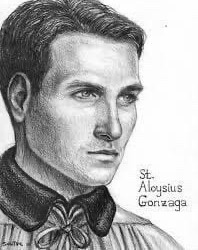
Memorial of Saint Aloysius Gonzaga,
Aloysius Gonzaga, the cousin of Saint Rudolph Acquaviva, was an Italian noble who grew up in a castle. The son of a compulsive gambler, he was trained from age four as a soldier and courtier. Aloysius suffered from kidney disease which he considered a blessing as it left him bed-ridden with time for prayer. While still a boy, he taught catechism to poor boys. Aloysius received First Communion from Saint Charles Borromeo. At age 18 he signed away his legal claim to his family's lands and title to his brother, and became a Jesuit novice. A spiritual student of Saint Robert Bellarmine, Aloysius tended plague victims in Rome in the outbreak of 1591. He died in 1591 at Rome of plague and fever.
2 notes
·
View notes